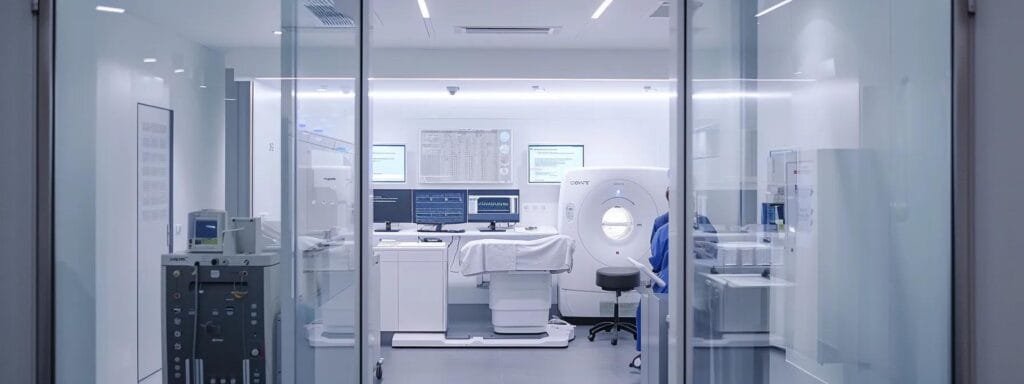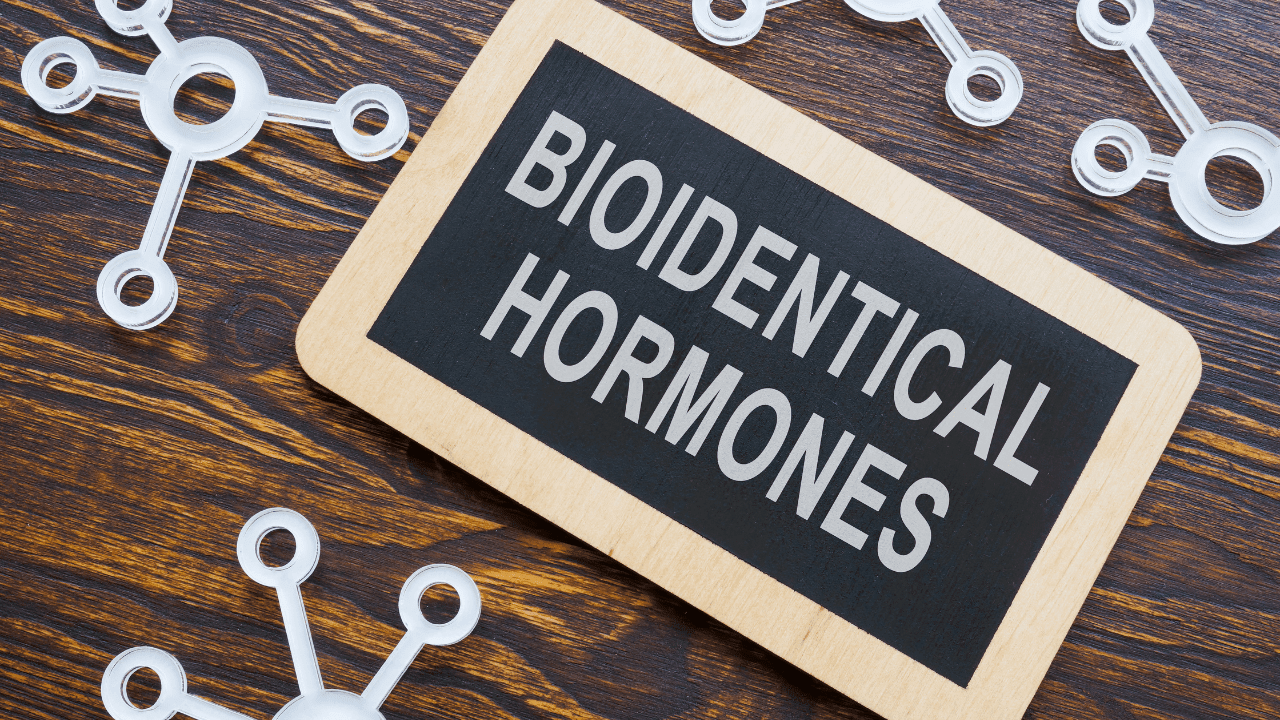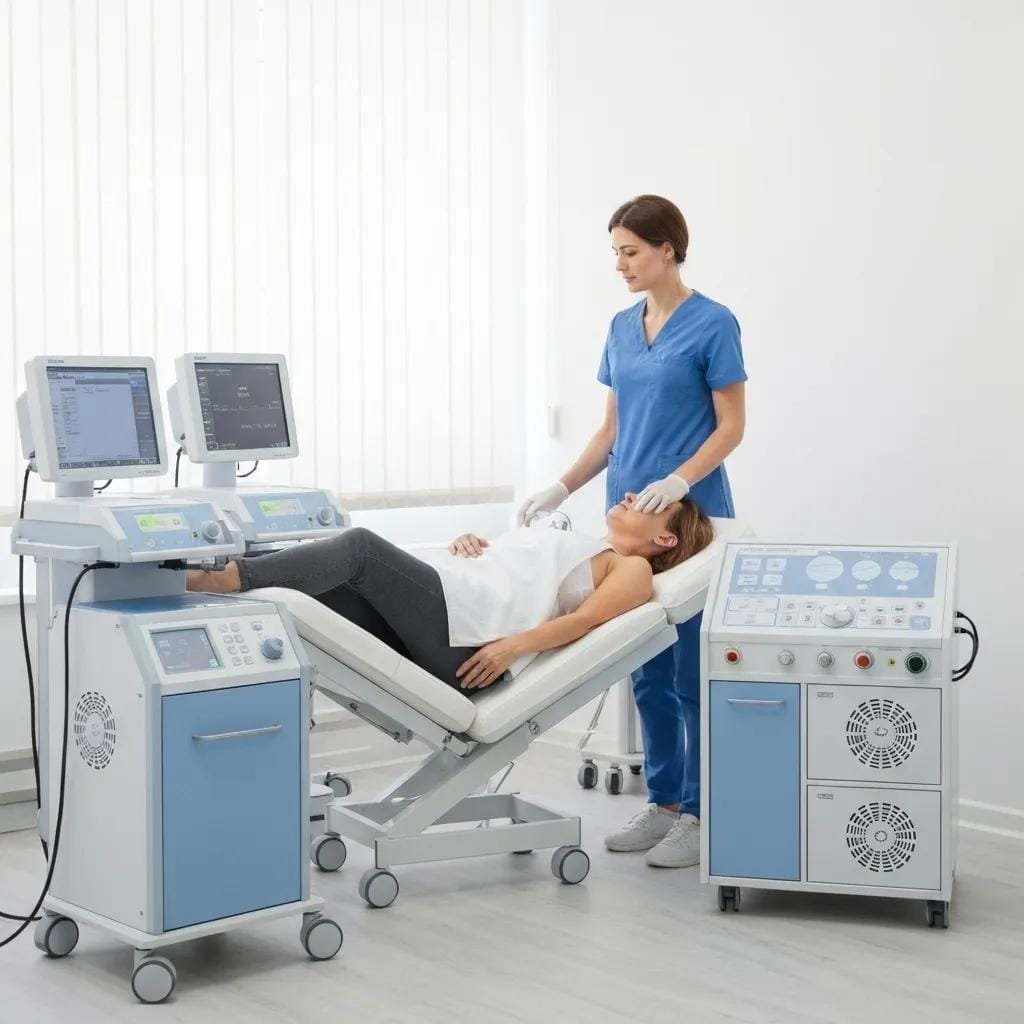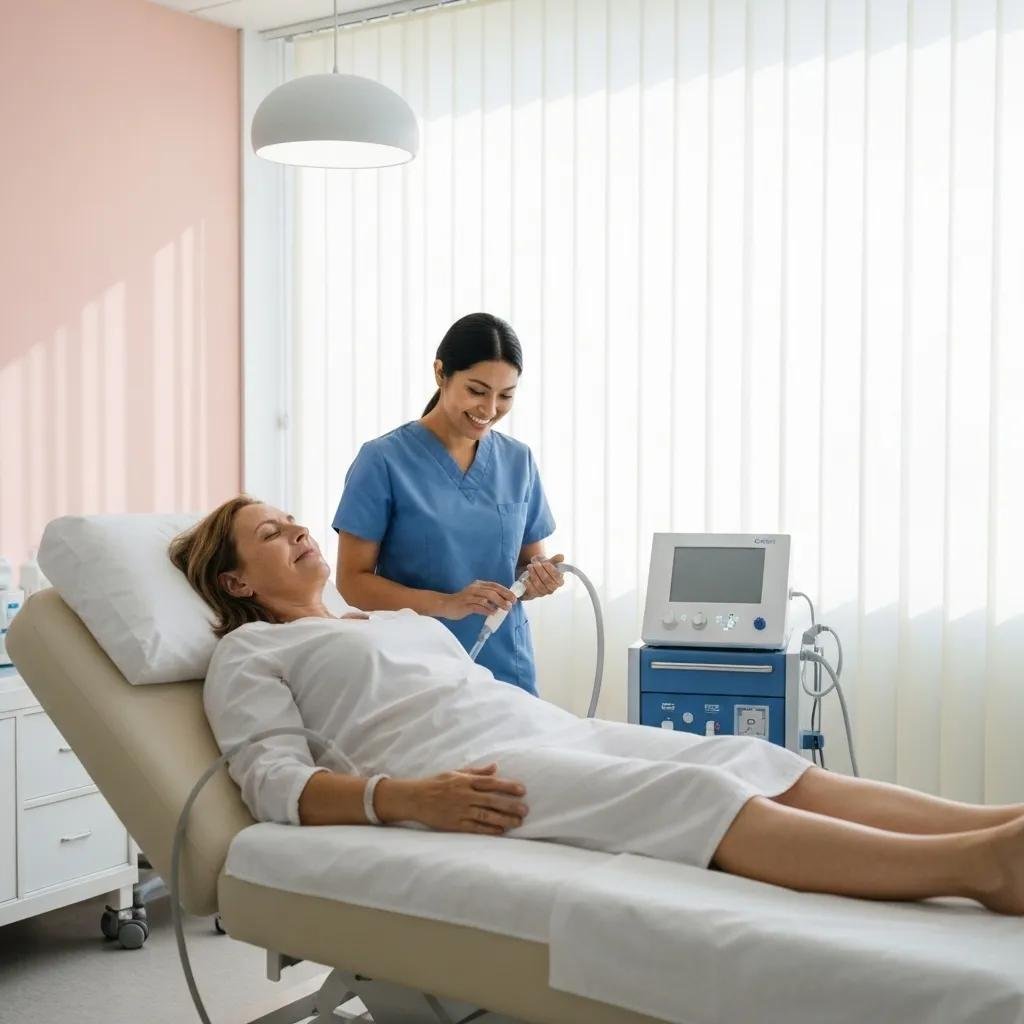Bioidentical Hormone Replacement vs Traditional HRT: Benefits & Risks
In recent years, bioidentical hormone replacement therapy (BHRT) has emerged as a personalized alternative to traditional hormone replacement therapy (HRT). Patients seeking relief from hormonal imbalances—especially those occurring during menopause or andropause—are attracted to BHRT because it uses hormones that mirror the body’s own. This article explains what bioidentical hormones are, how they work, their benefits and risks, how BHRT compares with traditional HRT, and practical considerations such as administration, cost, and selecting a qualified practitioner. The discussion is supported by scientific evidence and clinical insights, aiming to help both patients and healthcare professionals make well-informed decisions about hormone therapy.
Transitioning to the main discussion, we begin by defining bioidentical hormones and exploring their unique properties compared to synthetic hormones.
What Are Bioidentical Hormones and How Do They Work?
Bioidentical hormones are chemically identical to the hormones naturally produced by the human body. Their structure allows them to bind efficiently with hormone receptors, which promotes compatibility and minimizes adverse effects compared to synthetic alternatives.
What Defines Bioidentical Hormones Compared to Synthetic Hormones?
The key difference is in their molecular configuration. Bioidentical hormones, such as estradiol and progesterone derived from plant sources, are modified in the laboratory to match human hormones exactly. This molecular identity supports better metabolism and can reduce risks such as unwanted bleeding or imbalances. Many patients report fewer side effects with bioidentical formulations.
How Are Bioidentical Hormones Produced and Administered?
Bioidentical hormones are generally produced by isolating precursors from plant sources like soy or yams and chemically modifying them to achieve the human hormone structure. They are available in multiple forms—including creams, gels, pellets, injections, and oral formulations. Healthcare providers determine the appropriate dosage based on individual hormone levels measured via blood or saliva tests, tailoring treatment to mimic the natural hormonal cycles.
Which Hormones Are Commonly Used in BHRT?
BHRT typically includes estrogen (both estradiol and estriol), progesterone, and testosterone. In women, the combination of estrogen and progesterone helps regulate the menstrual cycle and mitigate menopausal symptoms. In men, testosterone therapy may help improve libido and energy levels. Some treatment plans also incorporate other hormones like DHEA depending on individual needs.
How Does BHRT Mimic the Body’s Natural Hormone Production?
BHRT is designed to emulate the natural secretion patterns of hormones. Customized treatment plans adjust dosing periodically based on regular laboratory monitoring. For example, cyclic dosing regimens can replicate the hormonal fluctuations seen during a menstrual cycle, promoting homeostasis and contributing to improvements in mood, cognitive function, and overall metabolic balance.
How Does Bioidentical Hormone Replacement Therapy Compare to Traditional Hormone Replacement Therapy?

BHRT stands apart from traditional HRT primarily because its hormones are an exact match to those the body produces. While both approaches aim to relieve symptoms of hormonal deficiency, BHRT’s tailored formulations enable more precise dosing and may result in fewer side effects.
What Are the Key Differences Between BHRT and Traditional HRT?
The primary distinction is chemical composition. BHRT employs hormones identical in structure to natural ones, whereas traditional HRT can include modified or synthetic hormones. This difference enhances cellular compatibility in BHRT, which is why some clinicians believe it may reduce risks of complications like cardiovascular issues or certain cancers when used under proper supervision.
How Do BHRT and HRT Differ in Hormone Sources and Customization?
Traditional HRT often comes in standardized doses manufactured in bulk, while BHRT is custom-compounded based on individual hormonal profiles determined through tests (e.g., saliva or blood assays). This personalized approach factors in age, weight, menopausal status, and medical history, offering treatment that is adjusted to the patient’s specific hormonal needs.
What Are the Differences in Effectiveness and Symptom Relief?
Patients on BHRT have reported improvements in sleep quality, reduced anxiety, and greater mental clarity. Although traditional HRT might sometimes offer faster symptom relief, its side effect profile can be less favorable. The ability of BHRT to closely simulate the body’s natural hormone production is a key factor in its effectiveness and tolerability.
How Do Side Effects and Risks Compare Between BHRT and HRT?
BHRT generally shows a lower incidence of side effects. Common issues with traditional HRT include increased risks of breast cancer, cardiovascular events, and thromboembolism. In contrast, BHRT side effects are often mild and transient (such as minor skin irritation), largely because dosing is customized and closely monitored, ensuring hormone levels remain close to physiological norms.
What Are the Benefits of Bioidentical Hormone Replacement Therapy?
The benefits of BHRT extend beyond basic symptom relief, enhancing physical, cognitive, and emotional well-being. Restoring natural hormone levels can have widespread positive effects on energy, memory, and overall quality of life.
How Does BHRT Improve Menopausal Symptoms?
Menopause commonly brings symptoms such as hot flashes, night sweats, mood swings, and sleep disturbances due to declining estrogen and progesterone levels. BHRT helps replenish these hormones in a way that mirrors their natural cycle. Many women experience a reduction in hot flash frequency (up to 40% in some reports), along with improvements in sleep and emotional stability, due to the personalized dosing approach.
Can BHRT Help With Andropause and Testosterone Deficiency?
In men, gradual declines in testosterone—often referred to as andropause—can lead to fatigue, reduced libido, and muscle loss. BHRT for men focuses on restoring testosterone levels, which can improve energy, mood, and lean body mass. Customized therapy supports not just symptom relief but also metabolic and cardiovascular health, contributing to an overall better quality of life.
What Are the Potential Quality of Life Improvements With BHRT?
Beyond addressing specific symptoms, BHRT can improve cognitive function and weight management while enhancing libido and sleep quality. The restoration of a balanced hormone profile often results in more stable moods and increased physical resilience, allowing patients to enjoy daily activities with renewed vitality.
How Does Personalized BHRT Enhance Treatment Outcomes?
Personalization is a major advantage of BHRT. Unlike standardized dosing in traditional HRT, BHRT treatment plans are individually tailored based on regular hormone level assessments. Adjustments in doses and delivery methods help maintain optimal hormonal balance over time, leading to more consistent symptom relief and sustained overall health improvements.
Comparing BHRT to Traditional HRT: Key Benefits & Differences

While BHRT offers many benefits, potential risks and side effects must be considered. Understanding these helps ensure that the therapy is both effective and safe when administered under expert supervision.
What Are Common Side Effects Associated With BHRT?
Side effects from BHRT are generally mild. Some patients may experience minor skin irritation from topical applications, headaches, or slight gastrointestinal discomfort. Other occasional effects include small changes in mood or weight fluctuations. These side effects typically diminish as the body adjusts to the new hormone levels, and careful dose adjustments further minimize them.
Are There Long-Term Health Risks Linked to BHRT?
Although long-term data are still emerging, current evidence suggests that when BHRT is properly managed, its risk profile is favorable compared to traditional hormone therapies. The risk of cancer or cardiovascular disease appears minimal when hormone levels are maintained within normal ranges. Routine monitoring with blood tests and clinical assessments is essential to manage any potential risks effectively over time.
How Do Risks of BHRT Compare to Traditional HRT?
Because BHRT uses hormones identical to those produced in the body, its associated risks—such as breast cancer, heart disease, and thromboembolism—tend to be lower than those associated with traditional HRT. Nonetheless, no hormone therapy is completely free of risk, and the success of BHRT depends on individualized dosing and thorough monitoring by experienced healthcare providers.
Who Should Avoid or Use Caution With BHRT?
BHRT may not be suitable for everyone. Individuals with hormone-sensitive cancers (e.g., breast or ovarian cancer) or with liver disease or thrombotic disorders should approach BHRT cautiously and consult medical specialists before beginning treatment. A thorough evaluation by a primary care physician or hormone expert helps ensure that only those likely to benefit proceed with BHRT.
Who Is a Good Candidate for Bioidentical Hormone Replacement Therapy?
Identifying the right candidate for BHRT requires careful evaluation of symptoms, hormone levels, and overall medical history. Not every patient with hormonal complaints will benefit from this therapy, making proper diagnosis and individualized treatment planning crucial.
What Symptoms or Conditions Indicate BHRT May Be Beneficial?
Candidates for BHRT often exhibit signs of hormone imbalance. In women, severe menopausal symptoms such as hot flashes, night sweats, irritability, and cognitive fog are common indicators. In men, symptoms like low libido, fatigue, and reduced muscle mass may suggest testosterone deficiency. Additionally, chronic fatigue, mood disturbances, or metabolic imbalances might also signal the potential benefit of a personalized hormone replacement program.
How Is Hormone Imbalance Diagnosed Before BHRT?
Diagnosis involves a thorough review of patient history, clinical evaluation, and laboratory testing (blood, saliva, or urine tests). Saliva testing is particularly valued for assessing the free, bioactive fraction of hormones. Combined with patient-reported symptoms and detailed medical history, these tests help establish a clear picture of hormonal imbalances and guide tailored BHRT regimens.
What Factors Influence BHRT Suitability?
Factors such as age, gender, overall health, previous medical history, and severity of symptoms all play a role in determining suitability for BHRT. Lifestyle factors and concurrent medications may also affect outcomes. For example, women with low estrogen levels and severe menopausal symptoms, as well as men with clinically documented testosterone deficiencies, are often ideal candidates.
When Should Patients Consult Medical Professionals About BHRT?
It is advisable to consult a healthcare provider as soon as persistent symptoms of hormonal imbalance—like disruptive menopausal or andropausal signs, unexplained weight changes, or mood disturbances—arise. Early intervention facilitates thorough diagnostic testing and the design of an individualized treatment plan, ensuring safe and effective BHRT management.
How Is Bioidentical Hormone Replacement Therapy Administered and Monitored?

The administration and monitoring of BHRT require a comprehensive approach tailored to each patient. Regular follow-ups and laboratory tests are essential to adjust dosing and ensure the therapy continues to meet the patient’s evolving physiological needs.
What Are the Common BHRT Delivery Methods?
BHRT can be delivered via various routes to suit individual preferences and clinical needs. Common methods include: – Creams and Gels: Applied topically for steady absorption. – Subcutaneous Pellets: Provide prolonged, stable hormone release. – Oral Formulations and Injections: Offer convenience though absorption may vary. Healthcare providers choose the method based on factors like lifestyle, desired absorption rate, and specific hormone levels.
How Is Hormone Dosage Customized and Adjusted?
Initially, baseline hormone testing sets the benchmark for individual dosing. Subsequent symptom evaluations and regular laboratory reassessments allow practitioners to fine-tune the dosage. This iterative process minimizes the risk of over-replacement or under-treatment, keeping hormone levels in a target physiological range for optimal treatment efficacy.
What Role Do Medical Professionals Play in BHRT?
Physicians play a central role by conducting clinical evaluations, interpreting test results, and formulating individualized treatment plans. They also monitor progress, educate patients on benefits and risks, and adjust dosages as needed to align treatment with changing hormonal dynamics. This collaborative approach is key to achieving lasting, positive outcomes.
How Often Should Patients Undergo Monitoring During BHRT?
Regular monitoring—commonly every three to six months—is crucial. These follow-ups allow healthcare providers to adjust dosages in response to any changes in symptoms or hormone levels, helping maintain target ranges and quickly addressing any potential side effects or complications.
How Much Does Bioidentical Hormone Replacement Therapy Cost and Is It Covered by Insurance?
The cost of BHRT varies based on formulation, dosage, and administration frequency. While initial expenses include baseline hormone testing and compounded medications, many patients view BHRT as an investment in long-term health and quality of life.
What Are Typical Costs Associated With BHRT?
Costs for BHRT generally include fees for hormone testing, the hormones themselves, compounding fees if medications are custom-made, and follow-up appointments. Monthly expenses can range broadly—from a few hundred to over a thousand dollars—depending on the specific treatment plan.
Does Insurance Usually Cover BHRT or Traditional HRT?
Insurance coverage for BHRT is inconsistent. Traditional HRT is more commonly covered, while BHRT may require out-of-pocket payments for compounded formulations. Patients are encouraged to verify details with their insurance providers, as diagnostic tests and follow-up visits might be covered even if the customized hormones are not.
How Can Patients Find Affordable BHRT Options?
Working with providers who specialize in integrative or holistic medicine may offer financial advantages, such as sliding scale fees or payment plans. Additionally, patients can compare prices among reputable compounding pharmacies and inquire about bundled service packages to offset overall costs.
Are There Financial Assistance or Payment Plans Available?
Some clinics offer financial assistance and flexible payment plans, making BHRT more accessible—especially for those who might benefit from improved hormone balance but are concerned about upfront costs. Discussing these options with a provider can help devise a plan tailored to a patient’s financial situation.
How Can You Find a Qualified Practitioner for Bioidentical Hormone Replacement Therapy?

Selecting a skilled practitioner is critical for the success of BHRT. Patients should verify that their provider has extensive training and experience with bioidentical hormone protocols.
What Credentials Should BHRT Providers Have?
Ideal providers typically have board certifications in fields such as endocrinology, integrative or functional medicine, or family medicine. Additional specialized training in hormone replacement techniques and experience with bioidentical formulations are essential indicators of expertise.
How Do You Verify a Practitioner’s Experience With BHRT?
Patients can assess a provider’s experience by reviewing their clinical background, years of practice, and any patient testimonials or published research. Referrals from primary care physicians and online reviews can also help gauge a practitioner’s reputation and compatibility with the patient’s needs.
What Questions Should You Ask Before Starting BHRT?
Before initiating therapy, patients should ask about the provider’s experience in balancing hormones such as testosterone, estrogen, and progesterone; inquire about monitoring frequencies and methods of administration; and discuss safety protocols along with potential side effects. This ensures that the treatment strategy is transparent and evidence-based.
Where Can You Find Local or Online BHRT Specialists?
BHRT specialists can be located through professional medical associations, referrals from primary care providers, or reputable integrative medicine clinics. Many practitioners now offer virtual consultations, increasing accessibility for patients regardless of location.
What Are Common Questions About Bioidentical Hormone Replacement Therapy?
As BHRT gains popularity, many patients have questions regarding its differences from traditional HRT, its benefits, and its safety.
What Is the Difference Between BHRT and HRT?
BHRT uses hormones that are chemically identical to those produced by the body, minimizing side effects and mimicking natural metabolism. In contrast, traditional HRT may utilize synthetic or modified hormones, which can lead to less predictable results.
What Are the Benefits and Risks of BHRT?
BHRT can improve symptom management in conditions like menopause and andropause, enhance cognitive function, and promote overall hormonal balance. While the risks are generally low—especially when dosing is closely monitored—mild side effects such as skin irritation or mood changes can occur.
How Long Does BHRT Take to Show Results?
Improvements are often noticed within a few weeks to a few months. Immediate benefits such as increased energy or better sleep may appear early, but significant changes in mood and cognitive function generally require six to twelve weeks of consistent therapy.
Can BHRT Be Used for Both Men and Women?
Yes, BHRT is designed for both genders. In women, it primarily treats menopausal symptoms and balances estrogen and progesterone, while in men, it addresses testosterone deficiencies related to andropause. In both cases, treatment is personalized to the patient’s unique hormonal needs.
Is BHRT Safe for Long-Term Use?
When properly administered and routinely monitored, BHRT is considered safe for long-term use. Regular testing ensures that hormone levels remain within physiological norms, although individual risk factors must be taken into account.
Frequently Asked Questions
Q: How do bioidentical hormones differ from synthetic hormones? A: Bioidentical hormones are identical in chemical structure to those naturally produced by the body, which enhances compatibility with hormone receptors and reduces side effects. They are derived from plant sources through precise chemical modifications.
Q: What monitoring is involved during BHRT treatment? A: Patients typically undergo blood, saliva, or urine tests every three to six months to ensure hormone levels remain within target ranges. These tests allow for timely dosage adjustments.
Q: Can bioidentical hormone replacement therapy improve mood and cognitive function? A: Yes, by restoring hormonal balance, BHRT often improves mood, cognitive clarity, and overall mental function. Many patients report reduced symptoms of depression and anxiety through optimized hormone levels.
Q: How personalized is BHRT compared to traditional HRT? A: BHRT is highly personalized, with therapies tailored to individual hormone levels, symptoms, and medical histories. This approach often leads to better outcomes than the standardized dosing used in traditional HRT.
Q: What should patients look for when choosing a BHRT provider? A: Patients should choose providers with board certifications in relevant specialties, significant experience in hormone therapies, and proven track records. Asking about monitoring protocols and patient testimonials can help in the decision-making process.
Q: Are the results from BHRT immediate, and what is the expected timeline for improvement? A: Some benefits, such as increased energy and improved sleep, can be experienced within days. However, more significant improvements in mood and cognitive function typically require six to twelve weeks of ongoing therapy.
Q: What financial options are available for those considering BHRT? A: Many clinics offer payment plans, sliding scale fees, or financial assistance programs. While insurance coverage for BHRT varies, patients should discuss bundled service options with their provider to keep treatment affordable.
Final Thoughts
BHRT represents a significant advancement in personalized medicine by offering hormone therapy that closely mirrors the body’s natural production. With its potential to alleviate menopausal, andropausal, and broader hormonal imbalance symptoms safely, BHRT is a compelling alternative to traditional HRT. Its success relies on individualized treatment plans, regular monitoring, and a collaborative approach between patients and skilled healthcare professionals. Patients interested in improving their quality of life through balanced hormone therapy are encouraged to consult with a qualified BHRT specialist.
Table: Comparison of BHRT and Traditional HRT
Below is a table outlining key differences between bioidentical hormone replacement therapy and traditional hormone replacement therapy.
| Attribute | BHRT | Traditional HRT |
|---|---|---|
| Chemical Structure | Identical to endogenous hormones | Often synthetic or modified |
| Customization | Highly personalized dosing | Standardized dosing |
| Side Effect Profile | Lower incidence of side effects | Higher risk of side effects |
| Source of Hormones | Derived from plant-based sources | May use synthetic hormones |
| Monitoring Frequency | Regular testing and iterative adjustments | Less frequent monitoring |
This table provides a concise side-by-side comparison, highlighting BHRT’s capacity for a safer, more tailored approach compared to traditional HRT.
List: Key Benefits of BHRT
Below is a numbered list summarizing the main benefits associated with bioidentical hormone replacement therapy:
- Improved Symptom Management – Significant relief from hot flashes, night sweats, and mood swings.
- Enhanced Cognitive Function – Better memory, focus, and mental clarity.
- Personalized Treatment – Customized dosing based on individual hormonal profiles.
- Better Long-Term Health – Potential improvements in metabolic health and reduced chronic disease risk.
- Higher Patient Satisfaction – Overall improvements in quality of life, sleep, and energy levels.
This list emphasizes how BHRT can lead to improved health outcomes and better overall well-being.




